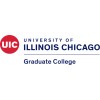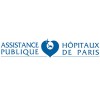
The Prophet Trial -Pilot Study to Assess Safety and Efficacy of a Novel Atrial Flow Regulator (AFR)...
Pulmonary HypertensionThis study aims to investigate safety and efficacy of Occlutech® AFR device in patients with severe pulmonary hypertension (PH).

Improving Blood Pressure and Cardiovascular Risk With Resistance Exercise in African Americans
HypertensionCardiovascular Diseases1 moreAfter the participant meets all inclusion and exclusion criteria, they will be randomized equally to either the Resistance Training group (RT) or Aerobic Training group (AT). Both groups will participate in an 8 week initial control period, followed by 8 weeks of supervised exercise training, followed by 8 weeks of deconditioning. All participants will undergo the same assessments and procedures one time prior to the initial 8 week control period, and at each of the three periods. Assessments include: blood draws; arterial stiffness testing; ultrasounds of the brachial artery to measure flow-mediated dilation (FMD); gluteal adipose tissue biopsies; exercise testing to determine VO2 max; body composition analysis via DEXA scans; ambulatory blood pressure measurement; diet analysis via food journals; medical history questionnaires; urine analysis for pregnancy; and activity monitoring via accelerometer. Total participation will be 24-26 weeks.

A Study to Assess Whether Macitentan Delays Disease Progression in Children With Pulmonary Arterial...
Pulmonary Arterial HypertensionThis is a prospective, multicenter, open-label, randomized, controlled, parallel Phase 3 study with an open-label single-arm extension period to evaluate pharmacokinetics (PK), safety and efficacy of macitentan in children with pulmonary arterial hypertension (PAH).

Combined Use of Radiofrequency-ablation and Balloon-septostomy in the Creation of a Stable Inter-atrial...
Pulmonary Arterial HypertensionThough graded balloon-atrial-septostomy (BAS) has been accepted as an effective palliative therapy for severe pulmonary arterial hypertension, spontaneous closure of septostomy is not uncommon. Radiofrequency-catheter-ablation (RFA), which has the potential to cause irreversible damage around the rim of created inter-atrial communication, might contribute to prevent the spontaneous closure. In patients with severe pulmonary arterial hypertension, the combined use of RFA and BAS (CURB) is investigated to create a stable inter-atrial communication.

Effects of DHEA in Pulmonary Hypertension
Pulmonary Arterial HypertensionThe goal of this crossover trial is to determine whether the study drug dehydroepiandrosterone (DHEA) improves right ventricular longitudinal strain measured by cardiac magnetic resonance imaging at 18 weeks compared to placebo and to assess side effects and safety in pulmonary arterial hypertension.

mGlide RCT: A Clinical Glide Path To Close the Guideline-to-Practice Gap In HTN Management
HypertensionHypertension (HTN) is the most important stroke and cardiovascular disease (CVD) risk factor. Unfortunately, there is substantial under-treatment of HTN. Of the 86 million adults with prevalent HTN in the U.S., 40 million (46%) have inadequately controlled blood pressure (BP). This problem is worse among minority groups. In this study, the investigators demonstrate how mHealth (mobile health technology) can improve HTN control rates in stroke survivors and primary care patients without stroke, but who are at a high risk of stroke and CVD. Our intervention is called mGlide. Intervention participants will self- monitor their BP daily using a wireless BP monitor and a smart phone. The phone will transmit this BP to a database automatically. The investigators will use the framework of glide paths to manage the transmitted BP data. The glide path, based on the concept of landing an airplane, establishes an expected trajectory of BP readings for each patient with bounds set by guidelines and provider input. BP is monitored at home; the health care team is alerted when patient BP deviates from expected bounds. Alerts are generated once a week for the health care team with a list of patients with uncontrolled HTN. This facilitates early intervention while avoiding information overload. Partnering clinical centers include Federally Qualified Health Centers that serve low income and minority (Latino, African American, Hmong) communities. In this RCT study, the investigators will randomize 450 participants with uncontrolled HTN to the mGlide intervention (n=225) vs. state-of-clinical-care comparison (n=225).

Open-Label Extension Study to Assess Safety, Efficacy, and Tolerability of Lorundrostat in Subjects...
HypertensionThis study is to evaluate the long-term safety, efficacy and tolerability of lorundrostat (an aldosterone synthase inhibitor) in subjects with uncontrolled hypertension.

Mono vs. Dual Therapy for Pediatric Pulmonary Arterial Hypertension
Pediatric Pulmonary HypertensionThe investigators' central hypothesis is that early combination therapy with two PAH-specific oral therapies that have been shown to be well tolerated in the pediatric population, sildenafil and bosentan, will result in better World Health Organization (WHO) functional class at 12 months after initiation of PAH treatment than therapy with sildenafil alone.

Resistance Plus Aerobic Training Using Different Weekly Frequencies And Hypertension
HypertensionCardiovascular Risk Factor1 moreCombined training is a cornerstone intervention to improve functionality and to reduce blood pressure in older adults with hypertension. Acute blood pressure lowering after exercise seems to predict the extent of blood pressure reduction after chronic training interventions. Based on that, the same weekly amount of exercise performed more frequently could be more beneficial to blood pressure management. The aim of the present study is to evaluate the effects of a combined exercise program performed four versus two times per week on 24-h ambulatory blood pressure and other cardiovascular risk factors in older individuals with hypertension.

Initial Dual Oral Combination Therapy Versus Standard-of-care Initial Oral Monotherapy Prior to...
Thromboembolic Pulmonary HypertensionChronic Disease1 moreChronic thromboembolic pulmonary hypertension (CTEPH) is characterised by an obstruction of proximal or more distal pulmonary arteries by residual organized thrombi, combined with a variable microscopic pulmonary vasculopathy (microvasculopathy). Besides lifelong anticoagulation, surgical pulmonary endarterectomy is the treatment of choice in subjects with proximal CTEPH affecting large pulmonary arteries. However, around half of CTEPH subjects are not operated, mainly because of distal lesions inaccessible to surgery. International data have reported survival rates of 88, 79, and 70% at 1, 2, and 3 years, respectively, in subjects with inoperable CTEPH, underscoring the need for better treatment strategies. In those subjects, current guidelines recommend medical therapy with or without balloon pulmonary angioplasty (BPA). Currently, only one drug (riociguat), targeting the NO pathway, is approved and reimbursed in Europe. Thus, riociguat monotherapy is considered as the standard-of-care treatment for subjects newly diagnosed with inoperable CTEPH. Recently, macitentan, targeting the endothelin-1 pathway, showed to be also effective in subjects with inoperable CTEPH. However, macitentan is currently not approved for CTEPH in Europe. BPA has been also reported to improve hemodynamics, symptoms and exercise capacity. However, complications, including mainly vascular injury, may occur during this procedure and it has been shown that the risk of BPA-related complications was strongly related to the level of pre-BPA mean pulmonary artery pressure (mPAP) and pulmonary vascular resistance (PVR). Medical therapy and BPA have in fact complementary effects since they target different lesions. Indeed, BPA targets fibrotic organized thrombi in the segmental arteries down to small pulmonary arteries of 2-5 mm in diameter. Medical therapy, for its part, targets microvasculopathy, similar to that observed in pulmonary arterial hypertension (PAH), in vessels less than 0.5 mm in diameter. Therefore, it is strongly believed that the use of medical therapy prior to BPA may reduce the risk of BPA-related complications by improving pulmonary hemodynamics and may improve global efficacy. In PAH, initial dual oral combination therapy with drugs targeting the NO and endothelin pathways is considered as a standard of care, more efficacious than monotherapy and safe. In contrast, there are no data from controlled trials regarding the efficacy and safety of initial combination therapy regimens versus standard-of-care monotherapy in treatment-naïve subjects with inoperable CTEPH. The investigators hypothesize that initial dual oral combination therapy may be superior to standard-of-care riociguat monotherapy for improving pulmonary hemodynamics prior to BPA and for reducing the risk of BPA-related complications.
